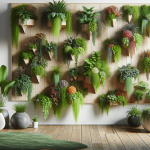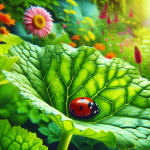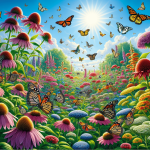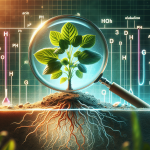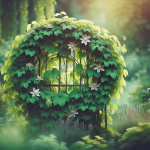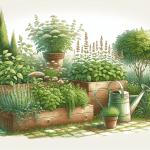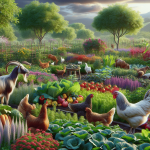This post may contain affiliate links. As an Amazon Associate, we may earn commissions from qualifying purchases.
Creating a successful container garden may seem like a daunting task at first, but with a few simple guidelines, you can transform even the smallest of spaces into a flourishing oasis. Whether you’re a novice or a seasoned gardener, this article is here to guide you through the process of choosing the right containers, selecting the perfect soil, and picking the ideal plants for your container garden. By the end of this read, you’ll be equipped with the knowledge and confidence to create a beautiful and bountiful container garden that will thrive for seasons to come. So, let’s get started!
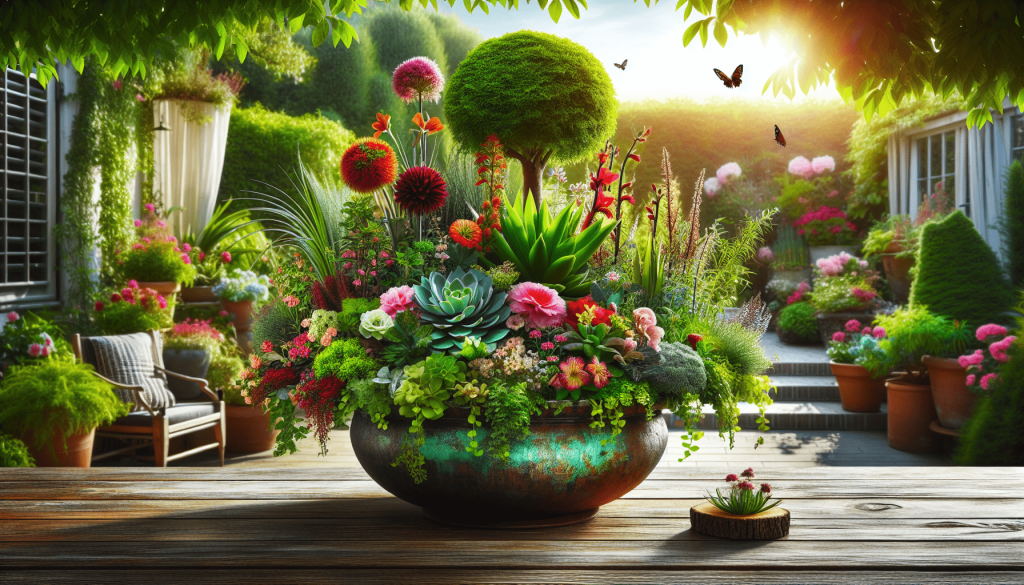
Choosing the Right Containers
Selecting the Right Size
When it comes to choosing containers for your garden, size matters. You want to ensure that your plants have enough room to grow and thrive without feeling cramped. Consider the mature size of your plants and choose containers that can accommodate their root systems. Larger plants will need bigger containers, while smaller plants can do well in smaller pots. It’s important to strike a balance between allowing enough space for growth and ensuring that the containers are not too heavy or cumbersome to move around.
Considering Drainage
Proper drainage is crucial for the health of your container garden. Without it, the roots of your plants may become waterlogged and prone to rot. When selecting containers, look for those that have drainage holes at the bottom to allow excess water to escape. If you fall in love with a container that doesn’t have drainage holes, you can drill some yourself. Just be sure to place a layer of gravel or broken pottery shards at the bottom of the container before adding soil to facilitate drainage.
Material Options for Containers
Containers come in a variety of materials, each with its own pros and cons. Clay or terracotta pots are classic and porous, allowing for air circulation and water evaporation. However, they can be prone to cracking in freezing temperatures. Plastic containers are lightweight and affordable, but they may not provide the same breathability as clay. Metal containers, such as those made from galvanized steel, are durable and can add a touch of modernity to your garden. Finally, there are fabric containers, which are lightweight, easy to store, and allow for excellent drainage. Consider the specific needs of your plants and your personal aesthetic preferences when choosing the material for your containers.
Using Repurposed Containers
Don’t overlook the possibility of repurposing items around your home as containers for your garden. Old buckets, baskets, and even colorful ceramic dishes can make unique and charming homes for your plants. Just ensure that any repurposed containers have proper drainage and are clean before using them for gardening. This option not only saves money but also gives your garden a creative and eco-friendly touch.
Choosing the Right Plants
Assessing Sunlight Requirements
Understanding the sunlight requirements of your plants is essential for their success in a container garden. Some plants thrive in full sun, whereas others prefer partial shade or even full shade. Take the time to observe the amount and intensity of sunlight that your chosen location receives throughout the day. Once you have this information, you can select plants that are suited to the light conditions. Leafy greens and herbs, for example, generally require less sun than flowering plants.
Considering the Climate
Different plants have varying temperature and climate preferences. Some plants are more cold-hardy and can tolerate colder temperatures, while others are heat lovers and thrive in warmer climates. Before selecting plants for your container garden, research their specific climate requirements and ensure that they align with the conditions in your area. If you live in an area with extreme temperatures, you may need to provide additional protection or choose plants that are better suited to your climate.
Choosing Annuals or Perennials
Another consideration when choosing plants for your container garden is whether to opt for annuals or perennials. Annuals complete their life cycle in one growing season and need to be replanted each year. Perennials, on the other hand, come back year after year, providing long-term beauty and stability to your garden. Consider the time and effort you’re willing to invest in your garden and choose plants accordingly. Some container gardeners enjoy the constant change and creative possibilities that annuals offer, while others prefer the reliability and low maintenance of perennials.
Determining Space Requirements
Each plant has its own growth habit, and it’s important to consider the space requirements of your chosen plants. Some plants, like vining vegetables or sprawling flowers, may need ample room to spread out. Others, such as compact herbs or dwarf fruit trees, can be grown in smaller spaces. Be sure to research the mature size of your plants and plan your container sizes accordingly. Expanding beyond the physical boundaries of your containers can lead to overcrowding and can negatively impact the growth and health of your plants.
Preparing the Containers
Cleaning and Disinfecting Containers
Before planting in your containers, it’s crucial to clean and disinfect them. This step helps remove any potential pathogens or pests that could harm your plants. Start by scrubbing the containers with a mixture of soap and water, ensuring that you clean both the inside and outside surfaces. Rinse thoroughly to remove any soap residue. For an extra level of cleanliness, you can then disinfect the containers by soaking them in a solution of one part bleach to nine parts water. Let them air dry before proceeding to the next step.
Adding Drainage Holes
If your containers don’t already have drainage holes, it’s important to add them to prevent water from accumulating and drowning the roots of your plants. Using a drill with a bit suitable for the material of your containers, carefully create several small holes in the bottom. Alternatively, you can use a hammer and nail to puncture holes if your containers are made of softer materials like plastic. Ensure that the holes are evenly spaced to allow for proper drainage.
Choosing the Right Soil Mix
The soil mix you use in your containers can greatly impact the health and vitality of your plants. For most container gardens, it’s recommended to use a high-quality potting mix specifically formulated for containers. These mixes are typically lightweight, well-draining, and contain a blend of organic matter and nutrients. Avoid using garden soil, as it can become compacted and may not drain properly in containers. Additionally, garden soil may contain weed seeds, pests, or diseases that can harm your plants.
Adding Amendments and Fertilizers
To give your plants the best start possible, consider adding amendments and fertilizers to your soil mix. Organic matter, such as compost or well-rotted manure, can improve the structure of the soil and add essential nutrients. When selecting fertilizers, you have the option of organic or synthetic. Organic options are derived from natural sources and provide slow-release nutrients, while synthetic fertilizers offer a more immediate nutrient boost. Be sure to follow the instructions on the packaging for proper application rates and frequency.
Planting Techniques
Selecting Healthy Seedlings or Seeds
When purchasing plants for your container garden, choose seedlings or seeds that are healthy and disease-free. Look for seedlings with vibrant green leaves and strong stems. Avoid plants with yellowing leaves, signs of pests, or root-bound growth. If starting from seeds, ensure that they are fresh and viable. By starting with healthy plants, you give your container garden a better chance of thriving.
Transplanting Seedlings
If you’re starting your plants from seeds and need to transplant seedlings into containers, follow proper transplanting techniques. Gently remove the seedlings from their existing containers, being careful not to disturb the roots too much. Dig a hole in the prepared container soil mix that is deep and wide enough to accommodate the roots of the seedling. Place the seedling in the hole, ensuring that the base of the stem is level with the soil surface. Fill in the hole with soil mix, gently firming it around the seedling. Water thoroughly to settle the soil.
Direct Sowing
For some plants, direct sowing is a viable option. This means planting the seeds directly into the containers where they will grow. Before sowing, ensure that the containers are filled with the appropriate soil mix and have proper drainage. Follow the recommended seeding depth and spacing outlined on the seed packet. Water gently after sowing to settle the seeds and maintain moisture until germination occurs.
Spacing and Placement
Proper spacing and placement of your plants within the containers are important factors to consider for their growth and health. Each plant has its own space requirements, so follow the recommendations for specific varieties. Overcrowding can lead to a lack of airflow and competition for nutrients, while plants spaced too far apart can result in wasted space. Consider the mature size of the plants and arrange them accordingly, ensuring that each plant has enough space to thrive.
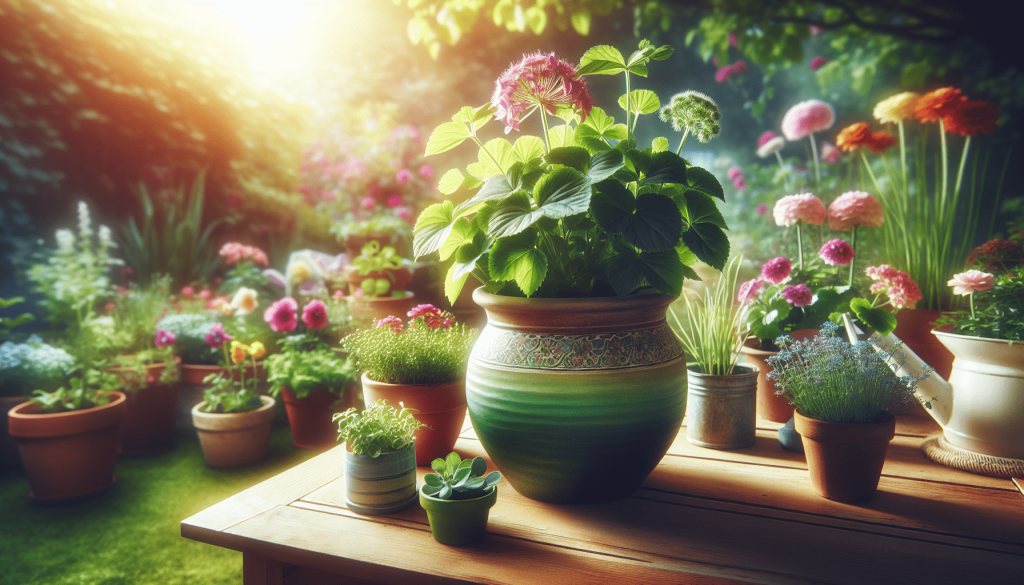
Watering and Irrigation
Understanding Watering Needs
Proper watering is crucial for the success of container gardens. Different plants have varying watering needs, so it’s important to understand the requirements of the plants you’re growing. Some plants prefer consistently moist soil, while others prefer to dry out slightly between waterings. Factors such as temperature, humidity, and container size can also impact watering frequency. To check if your plants need water, insert your finger into the soil up to the first knuckle. If it feels dry at that depth, it’s time to water.
Providing Proper Drainage
While it’s important to water your container garden regularly, it’s equally important to ensure proper drainage to prevent waterlogged roots. The presence of drainage holes at the bottom of your containers helps excess water escape. Avoid overwatering, as it can lead to root rot and other water-related issues. If your containers don’t have drainage holes, consider drilling some or using a different container with proper drainage.
Using Self-Watering Containers
Self-watering containers are an excellent option for those who want to ensure that their plants receive consistent moisture without the risk of overwatering. These containers have a built-in reservoir that holds water for the plants to absorb as needed. Self-watering containers usually have a wicking mechanism that draws water up from the reservoir into the soil. This system can help reduce watering frequency and ensure your plants receive the optimal amount of moisture.
Installing Drip Irrigation Systems
For larger container gardens or those with a busy schedule, installing a drip irrigation system can be a time-saving and efficient solution. Drip irrigation delivers water directly to the soil, minimizing evaporation and reducing the risk of foliar diseases. These systems use tubes with small emitters that drip water slowly and evenly onto the soil surface. You can customize the system to fit the layout of your containers, ensuring that each plant receives adequate irrigation.
Feeding and Nutrients
Understanding Nutritional Needs
Just like humans, plants have specific nutritional needs to grow and thrive. Understanding the nutrient requirements of your plants is crucial for their success in a container garden. Essential nutrients for plants include nitrogen, phosphorus, and potassium, as well as trace elements like calcium, magnesium, and iron. The specific nutrient needs may vary depending on the plants you’re growing. Some plants, like leafy greens, have a higher demand for nitrogen, while fruiting plants require more phosphorus and potassium.
Choosing the Right Fertilizers
When it comes to fertilizers, there are two main options: organic and synthetic. Organic fertilizers are derived from natural sources, such as compost, manure, or bone meal. They slowly release nutrients into the soil, providing a steady supply throughout the growing season. Synthetic fertilizers, on the other hand, are manufactured and contain specific ratios of nutrients. They provide a more immediate nutrient boost to plants. Choose fertilizers that are specifically formulated for container gardening and follow the instructions on the packaging for proper application rates.
Organic vs. Synthetic Fertilizers
Deciding between organic and synthetic fertilizers largely depends on personal preferences and gardening philosophies. Organic fertilizers are considered more environmentally friendly, as they are derived from natural sources and promote soil health. They can also improve the overall fertility and structure of the soil over time. Synthetic fertilizers, on the other hand, can provide a quick nutrient boost to plants, but their long-term environmental impact and potential risk of chemical buildup in the soil should be considered. Ultimately, your choice of fertilizer should align with your gardening goals and values.
Feeding Schedule and Application
Proper fertilization involves developing a feeding schedule and applying the fertilizers according to the specific needs of your plants. Research the nutritional requirements of each plant variety and determine the optimal frequency and dosage for fertilization. It’s generally recommended to start fertilizing your container garden a few weeks after planting. Follow the instructions on the fertilizer packaging to ensure you’re applying the correct amount. Over-fertilization can lead to nutrient burn, so it’s important to apply fertilizers judiciously.
Maintaining Container Gardens
Pruning and Deadheading
To keep your container garden looking its best, regular pruning and deadheading are necessary. Pruning involves removing any dead or damaged plant material, as well as shaping the plants to maintain their desired size and appearance. Deadheading, on the other hand, involves removing spent flowers or seed heads. This encourages the plant to put energy into producing new growth and blooms. Regularly inspect your container plants and use clean, sharp tools to make clean cuts when pruning or deadheading.
Weeding and Pest Control
Weeds can quickly invade your container garden and compete with your plants for water and nutrients. Regularly inspect your containers and remove any weeds as soon as you spot them. Be sure to pull out the entire weed, including the root system, to prevent regrowth. Additionally, container gardens can be susceptible to pests, such as aphids, mites, or slugs. If you notice signs of pest infestation, take immediate action to prevent further damage. There are various organic and chemical pest control methods available, depending on your preference and the severity of the infestation.
Mulching and Weed Barrier
Mulching your container garden can offer several benefits. Mulch helps retain soil moisture, regulate soil temperature, and suppress weed growth. Apply a layer of organic mulch, such as straw or wood chips, to the surface of the soil in your containers. This will not only improve the overall appearance of your garden but also help maintain a healthier growing environment for your plants. Additionally, consider using a weed barrier, such as landscape fabric or cardboard, at the bottom of your containers to prevent weeds from growing upwards from underneath.
Supporting and Staking Plants
Some container plants, particularly those with vining or climbing growth habits, may require support or staking to keep them upright and prevent them from toppling over. Consider installing stakes, trellises, or cages for plants that need support. As your plants grow, gently tie them to the supports using soft plant ties or twine. Ensure that the supports are securely anchored to prevent any damage or accidents. Supporting your plants not only improves their aesthetics but also promotes better airflow and reduces the risk of disease.
Protecting from Extreme Conditions
Protecting from Frost and Cold
Container gardens are more susceptible to frost and cold temperatures than plants grown in the ground. To protect your plants, bring them indoors or move them to a sheltered area when frost is expected. You can also cover your plants with protective blankets or sheets to insulate them from the cold. Additionally, placing your containers in a position that receives maximum sunlight during the day can help prevent freezing temperatures at night. Monitor weather forecasts and be prepared to take action to protect your plants when necessary.
Protecting from Heat and Sun
While sunlight is essential for plant growth, excessive heat and intense sun can be detrimental to container plants. Consider providing shade for your containers during the hottest part of the day, especially if you live in a region with scorching summers. This can be done using shade cloth, umbrellas, or by relocating your containers to a shadier spot. Avoid placing containers directly on hot surfaces, such as concrete or asphalt, as they can absorb and radiate heat. Providing proper ventilation and airflow around your plants can also help mitigate heat stress.
Managing Strong Winds
Strong winds can dry out container plants and potentially topple them over. To protect your container garden from strong winds, consider moving them to a more sheltered location, such as against a wall or near a windbreak. You can also use physical barriers, such as trellises or windbreak fences, to help deflect and reduce the wind’s impact on your plants. If moving the containers is not an option, consider securing them with stakes or weights to prevent them from tipping over. Regularly inspect your containers for signs of wind damage and make any necessary adjustments or repairs.
Dealing with Heavy Rain
While water is essential for plant growth, excessive rainfall can pose challenges for container gardens. Ensure that your containers have proper drainage to prevent waterlogged soil. Elevating your containers on risers or placing them in saucers with drainage holes can help prevent excess water buildup. If heavy rain is expected, consider moving your containers to a sheltered area or temporarily covering them to prevent them from becoming saturated. Monitor your plants for signs of overwatering, such as yellowing leaves or wilting, and adjust your watering schedule accordingly.
Harvesting and Replanting
Knowing When to Harvest
Harvesting is one of the most rewarding aspects of container gardening. Knowing when to harvest your fruits, vegetables, or herbs is essential for optimal taste and quality. Different plants have different indicators for harvest readiness, such as color, size, or texture. Consult gardening guides, seed catalogs, or online resources specific to the plants you’re growing to determine the best time for harvesting. Experimentation and personal preference can also play a role in deciding when to harvest.
Proper Harvesting Techniques
To ensure you harvest your crops properly, use the appropriate techniques for each plant variety. Some plants need to be harvested by cutting the entire plant just above the soil surface, such as leafy greens or root vegetables. Others, like tomatoes or peppers, require careful handpicking of individual fruits. Properly storing harvested produce is also crucial to maintain its quality. Follow recommended storage techniques for each crop, such as refrigeration or drying, to prolong its shelf life.
Saving Seeds
If you want to save seeds from your container garden for future planting, it’s important to properly collect and store them. Allow the fruits or seed pods to fully mature on the plant before collecting the seeds. Remove the seeds and let them air dry in a cool, dry location for a few weeks. Once completely dry, store the seeds in airtight containers, such as envelopes or glass jars, in a cool and dark place. Label each container with the plant variety and the date of collection for future reference.
Replanting for Succession Planting
To maximize the productivity of your container garden, consider succession planting. This involves replanting new crops as others finish producing. As you harvest your crops, remove the spent plants and replenish the soil with fresh compost or organic matter. Plan your planting schedule to take advantage of the growing seasons in your area and ensure a continuous supply of fresh vegetables or flowers. Succession planting keeps your container garden vibrant and productive throughout the year.
Troubleshooting Common Issues
Identifying Pests and Diseases
Pests and diseases can pose challenges in any garden, including container gardens. Regularly inspect your plants for signs of pests, such as chewed leaves, holes, or sticky residue. Also, keep an eye out for symptoms of common diseases, such as wilting, spots on leaves, or blackened stems. Research common pests and diseases that affect the plants in your container garden to better understand their symptoms and appropriate methods of control.
Preventing and Treating Pests
Prevention is often the best approach to dealing with pests in container gardens. Establish good garden hygiene practices, such as removing dead plant material and regularly cleaning your containers. Introduce natural predators, such as ladybugs or lacewings, to help control common pests. Physical barriers, such as netting or row covers, can also be effective in preventing pests from reaching your plants. If pest infestations occur, consider using organic pest control methods, such as insecticidal soaps or neem oil, to minimize the impact on beneficial organisms and the environment.
Recognizing Nutritional Deficiencies
Nutritional deficiencies can manifest as various symptoms in container plants, such as yellowing leaves, stunted growth, or poor fruit production. Common deficiencies include nitrogen, phosphorus, potassium, iron, or magnesium. Familiarize yourself with the signs of nutrient deficiencies specific to the plants in your container garden. Soil testing can also help identify any nutrient imbalances or deficiencies and guide appropriate fertilization practices.
Dealing with Overwatering or Underwatering
Overwatering or underwatering can have detrimental effects on your container garden. Both conditions can lead to weakened plants, root rot, or even plant death. To avoid overwatering, ensure that your containers have proper drainage and water your plants only when the soil feels dry to the touch. Underwatering can be prevented by regularly monitoring soil moisture and adjusting your watering schedule accordingly. Be mindful of the specific water needs of each plant variety and make adjustments as necessary.

